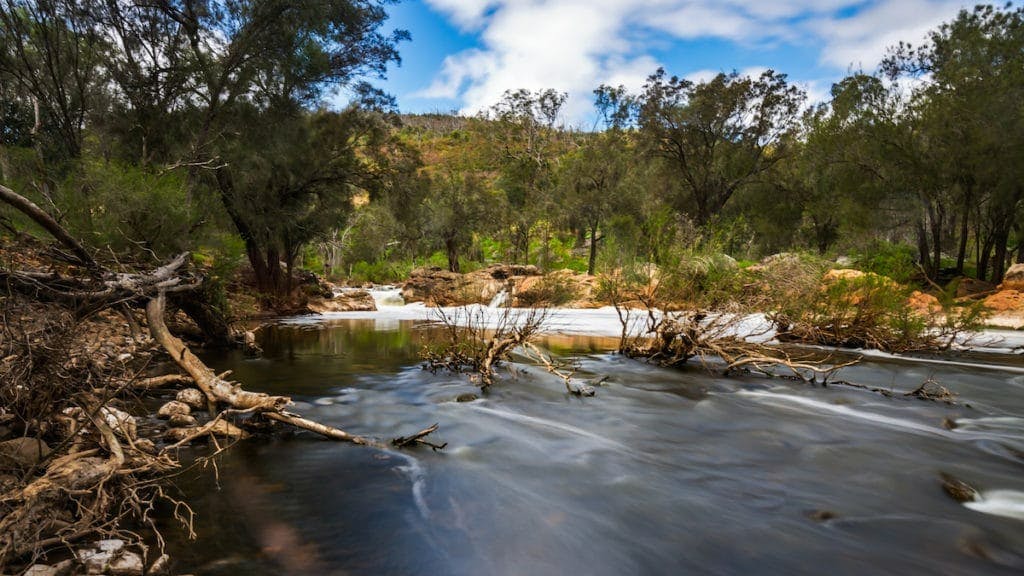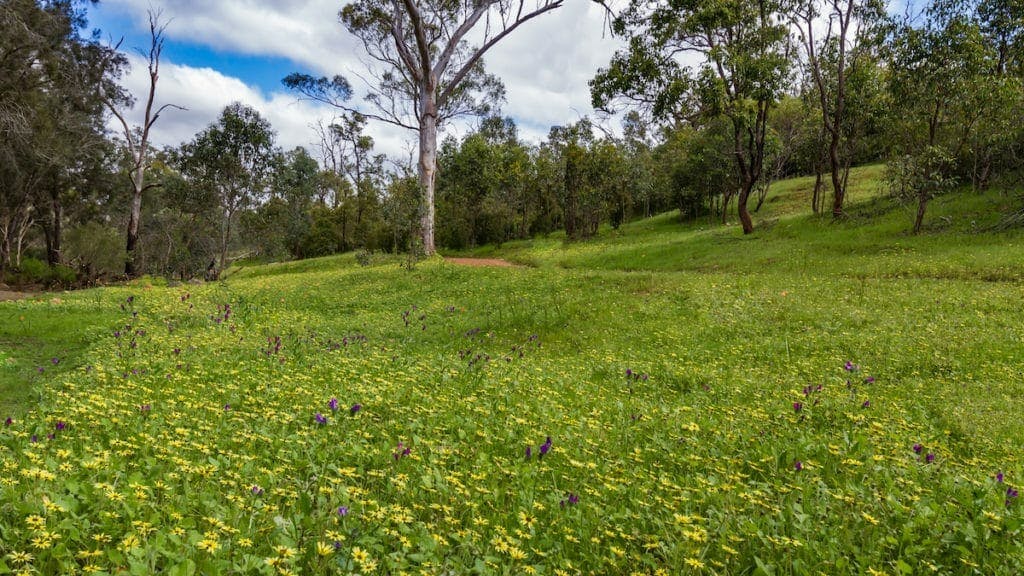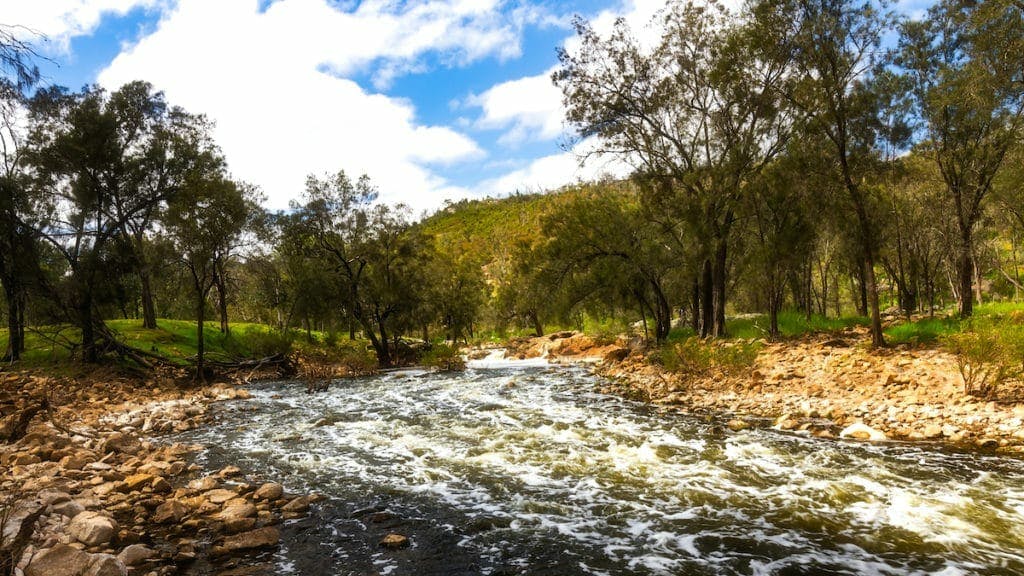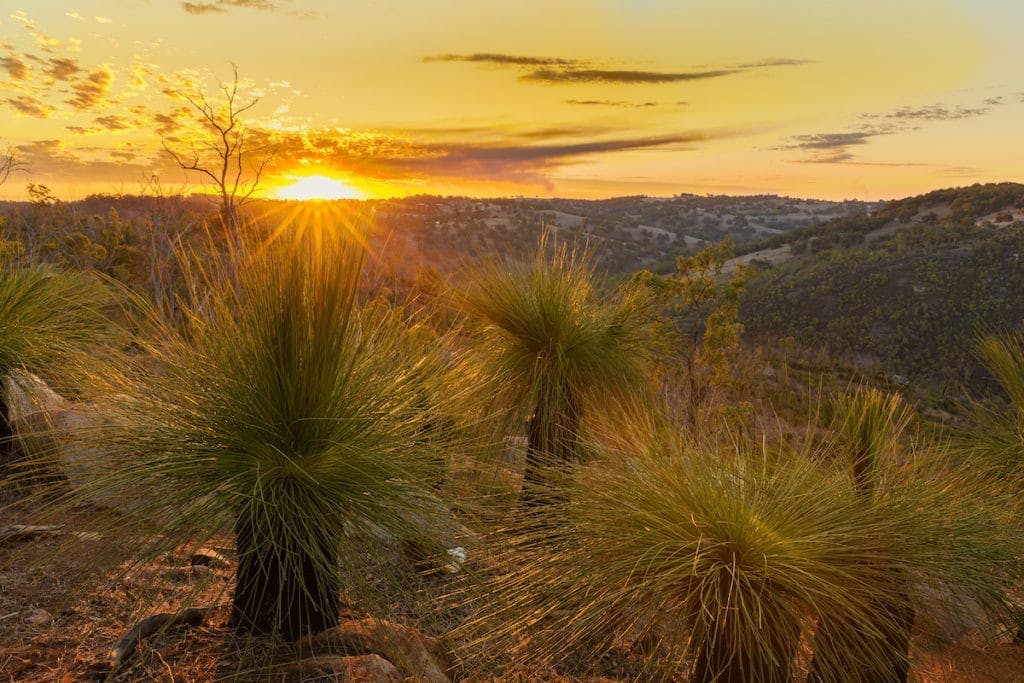Walyunga National Park: Everything you need to know

Just north of the Swan Valley, Walyunga National Park is a relatively unheard-of natural treasure trove filled with cascading rapids, forested valleys, rugged hills and wildlife aplenty.
Words by Cassie Wilkins.
An important Aboriginal campsite for over 40,000 years, the direct meaning of the name Walyunga has been lost to time, but it’s believed to translate roughly as “happy place” – and it’s easy to see why.
While it may be best known as an epic viewpoint for watching the Avon Descent – on a good year the rapids really don’t hold back! – Walyunga has a bunch of great walking trails, amazing wildflowers in spring and an on-site campground perfect for stargazing. There are also barbecues and picnic facilities, where you can chill by the river under the trees, watching the occasional train speed by.

What is it?
Walyunga National Park is an 1,800 hectare reserve in the Darling Ranges, with most of the park centered around the valley where the Wooroloo and the Avon meet to become the Swan River. In the winter and spring, heavy rainfall turns the meandering waterway into a series of thundering rapids with flooded gum groves, while in summer and autumn, it slows down to a lazy trickle with a few natural pools.
Home to one of the largest Aboriginal campsites around Perth up until the late 1800s, the riverside location made it a popular meeting spot with an abundance of food, water, shelter and materials for making tools – like quartz and dolerite rocks which can be found in the rocky riverbed in summer. The Nyoongar people have lots of Dreamtime stories about the Swan and how it was created by Waugal, the Rainbow Serpent, who left them the rocks to use as tools.
These days, the park’s walking trails are dotted with signs exploring the rich Indigenous history of the area. There’s also great kayaking and rafting in winter and plenty of scenic spots to escape the hustle and bustle of the city and relax for an afternoon.

Walyunga National Park is also home to lots of native flora and fauna, making it a great place to visit any time of the year. There are lots of waterbirds, goannas, kangaroos and galahs, with flooded gums along the river, marri and powderbark woodlands and ridges of jarrah up on the hills. Come spring, the park’s grassy wetlands, granite outcrops and heaths are filled with wildflowers and orchids, including everlastings, verticordias and triggerplants.
Most of the park’s attractions lie to the west of the river (with only limited access to the other side), which just means that you get to enjoy the unspoiled scenery and vistas from the riverbank. However, if you really want to explore more – or just marvel at the best views – there’s a scenic semi-secret lookout spot off O’Brien Road, but it’s a long old trek.
Note, that the park is only open from 8 am to 5 pm.

Where is it?
Just off the Great Northern Highway in Bullsbrook, Walyunga National Park is about 35 kilometres north of the city. Conveniently located close to the Swan Valley, it’s a great spot for a walk and wine afternoon.
You have to pay a national park fee (around $15/vehicle) or show your annual national park pass to enter the park. The gates at the entrance are only open from 8 am to 5 pm, however there is onsite camping if you want to stay overnight. The campsite is away from the river, to the left as you pass through the gate.
There is also a lookout on the eastern side of the park on O’Brien Road off Toodyay Road, where you can sit and look over the hills and see the river and railway tracks running through the valley below. Note, that while there are a few walking tracks here, there aren’t any amenities.
What to do:
While chilling out at Walyunga Pool and Boongarup Pool is a pretty perfect way to while away an afternoon, it’s also a great reward after a nice walk – and there are plenty of great walks here to choose from. Just make sure you bring plenty of water as it gets pretty hot in the summer!
The Aboriginal Heritage Trail is a nice easy, 1.6 km/1 hour return walk between Walyunga Pool and Boongarup Pool. There’s plenty of signage and you can see wildlife and wildflowers here in spring.
Syd’s Rapids Trail is a popular 3.5 km/1.5 hour return walk along the banks of the river from Boongarup Pool to Syd’s Rapids, which is especially impressive in winter after heavy rainfall and beautifully lush and green in spring.
If you fancy something a little longer, the Kangaroo Trail is a 4 km/2 hour loop extension of the Aboriginal Heritage Trail, while the Kingfisher Trail is a nice extension to the Syd’s Rapids Trail. More extreme hikers might want to tackle the Echidna Trail, a class 4 11 km/5 hour walk that meanders around the national park and includes some hill-climbing for great views.
Kayaking, rafting and boating is another great way to explore the park, with the famous Avon Descent passing right through here.
Subscribe to our free newsletter!
Between April and November, you can also go camping at Walyunga National Park. The campsite is small but sweet and is located in the forest away from the water. A great spot to escape the city lights and catch some stars, this is the only way you can experience the park after 5 pm when the gates close.

What not to do:
Don’t bring your dogs or pets, don’t pick wildflowers and don’t leave behind your trash or make a mess if you have a picnic or a barbecue – you know, the usual.
Oh, and remember the gates close at 5 pm every day on the dot – even if your car is still in the carpark – so try not to get locked in!
Anything else?
If you intend on coming here for the Avon Descent, you’ll have to get in early to fight for a park and be prepared to trek to find a decent vantage spot as it is very popular and gets pretty busy.
Image Credit: Shutterstock